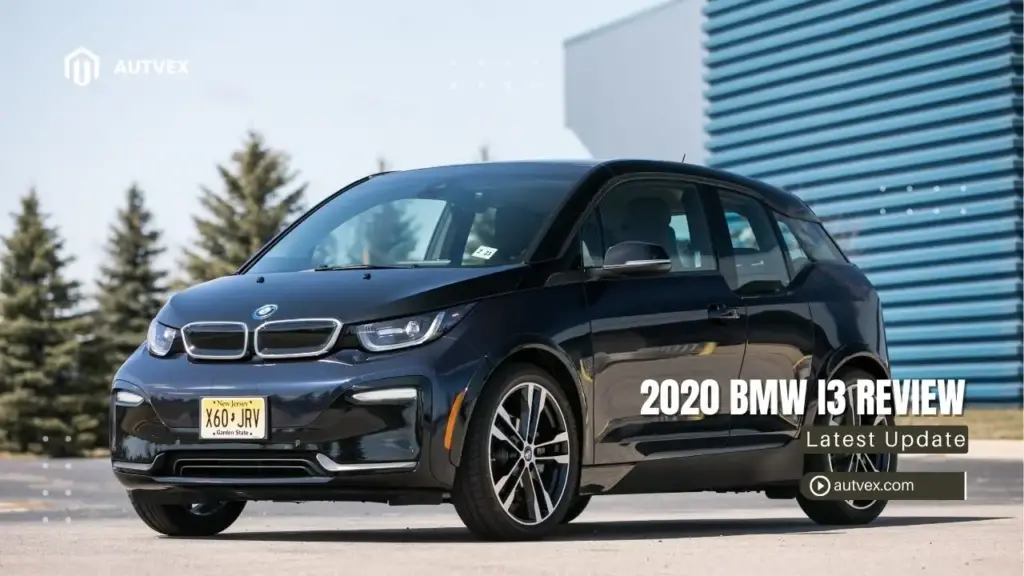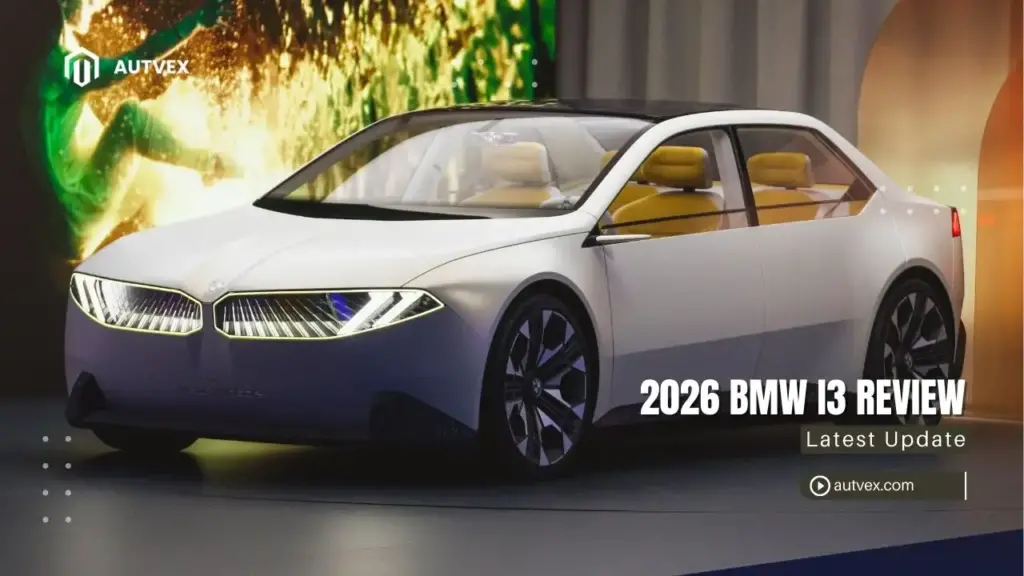You may also like:
The 2021 BMW i3 represents BMW’s final year of the unique electric hatchback before its discontinuation, offering an urban-focused electric car with distinctive carbon fiber construction and spacious cabin design paired with a limited 153-mile range and 50kW charging speeds that pale compared to modern EV competitors[1]. Current used market values range between $11,800-$25,300 depending on condition and mileage, with the vehicle experiencing significant 56% depreciation over three years[2]. While the i3’s innovative “suicide door” design and sustainable materials appeal to environmentally conscious buyers, its highway stability issues due to a short 101.3-inch wheelbase and impractical door configuration for families limit its mainstream appeal compared to alternatives like Tesla Model 3 or Chevrolet Bolt EV[3]. Understanding how long it takes to buy a car becomes important when considering this unique vehicle, as thorough inspection of specialized components requires extra time.
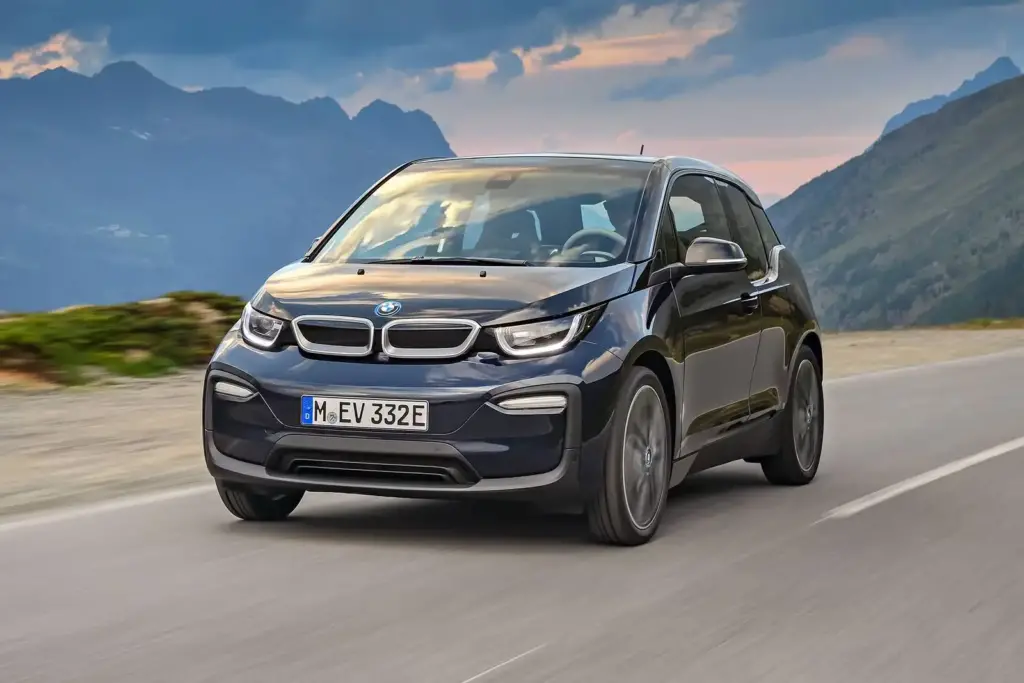
Quick Verdict: Is the 2021 i3 a Smart Buy?
Bottom Line Summary
The 2021 BMW i3 stands as BMW’s farewell to its pioneering electric city car, combining innovative engineering with practical limitations that define its used car appeal. This final model year represents the culmination of BMW’s experimental approach to electric mobility.
Core Value Propositions:
- Urban-focused design with unique carbon fiber construction reducing weight to 2,798 pounds
- Spacious cabin offering excellent visibility and sustainable interior materials
- Limited range of 153 miles EPA rating constraining long-distance travel
- Strong used values between $11,800-$25,300 based on condition and mileage[2]
Target Market Analysis:
The 2021 i3 appeals specifically to urban dwellers prioritizing environmental sustainability and unique design over conventional practicality or extensive range requirements.
Pros vs Cons Overview
Comprehensive Strengths and Weaknesses Assessment:
| Strengths | Weaknesses |
|---|---|
| Spacious interior with sustainable recycled materials | Limited 153-mile range vs Tesla Model 3’s 267+ miles |
| Excellent urban maneuverability with 32.3-foot turning radius | Highway instability due to short wheelbase design |
| One-pedal driving capability maximizing regenerative braking | Impractical door design challenging for child passenger access |
| Unique carbon fiber chassis providing lightweight construction | Expensive pricing compared to Chevrolet Bolt or Hyundai alternatives |
| Instant torque delivery with 184 lb-ft immediately available | Limited charging speed at 50kW DC maximum |
Competitive Context:
The i3’s 153-mile range significantly trails the 2021 Tesla Model 3’s 267-mile capability, while its 50kW charging speed pales against Tesla’s 170kW Supercharger compatibility[3].
Who Should Buy vs Skip
Ideal Purchase Scenarios:
- City commuters with consistent short-distance travel patterns under 100 miles daily
- Environmental enthusiasts prioritizing sustainable materials and carbon-neutral construction
- Secondary vehicle buyers complementing longer-range primary transportation
- Unique design appreciators seeking distinctive automotive styling and BMW heritage
Alternative Recommendations:
- Tesla Model 3 for superior range, charging speed, and technology integration
- Chevrolet Bolt EV for better value proposition and 259-mile EPA range
- Hyundai Kona Electric offering 258 miles range with more conventional design
Those considering other BMW options might explore the 2025 BMW 2-Series Gran Coupe for similar four-door practicality with traditional powertrains.
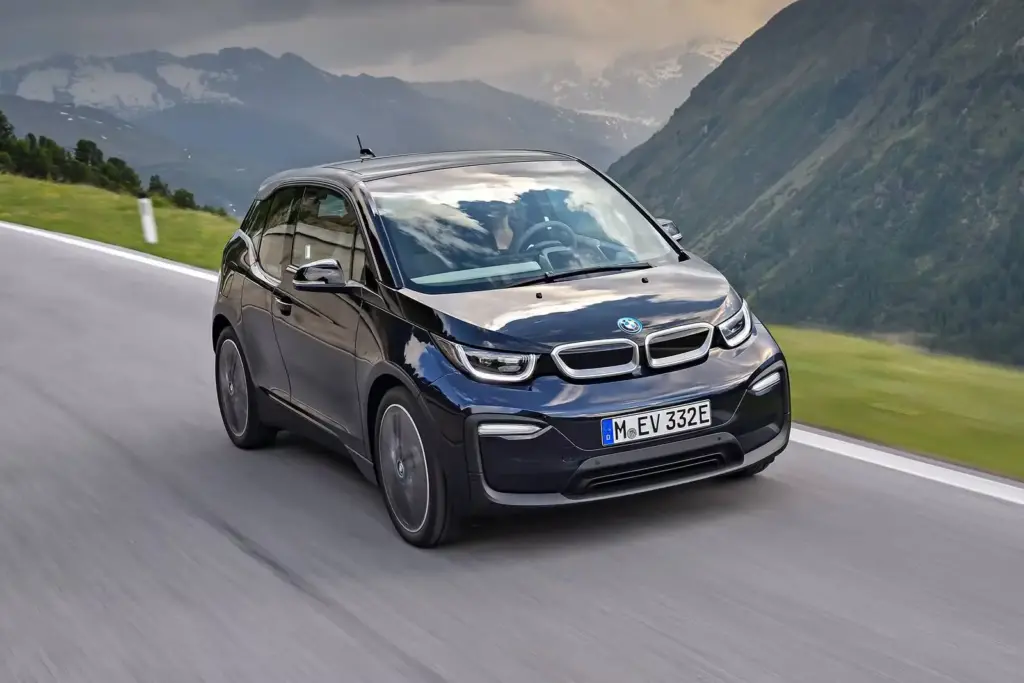
2021 BMW i3 Performance & Engine Analysis
Electric Motor Specifications
The 2021 i3 utilizes a sophisticated rear-mounted synchronous electric motor producing 168 horsepower and 184 lb-ft of torque with instant delivery characteristics[1].
Motor Performance Specifications:
| Specification | 2021 BMW i3 | Tesla Model 3 RWD |
|---|---|---|
| Motor Power | 168 horsepower | 325+ horsepower |
| Torque | 184 lb-ft | 317 lb-ft |
| 0-60 mph | 6.6 seconds | 5.8 seconds |
| Top Speed | 93 mph | 140 mph |
| Drive Configuration | Rear-wheel drive | Rear-wheel drive |
Real-World Performance:
The i3’s electric motor delivers impressive urban acceleration with immediate torque availability, though highway merging capability remains limited compared to modern EV competitors.
One-Pedal Driving System:
The regenerative braking system allows near-complete stops using only the accelerator pedal, recovering energy efficiently while reducing brake pad wear significantly.
Range Extender Option (REx) vs Pure Electric
BMW offered the 2021 i3 in both battery-electric (BEV) and range extender (REx) configurations, each serving different buyer needs and usage patterns.
Configuration Comparison:
| Feature | BEV Model | REx Model |
|---|---|---|
| Electric Range | 153 miles EPA | 153 miles EPA |
| Total Range | 153 miles | ~200 miles with REx |
| Starting MSRP | $44,450 | $48,300 (+$3,850) |
| Maintenance | Minimal | Additional engine service |
| Weight | 2,798 lbs | 2,961 lbs (+163 lbs) |
Range Extender Limitations:
The small 0.65-liter gasoline engine serves only as a generator, not directly powering wheels, with limited 34-horsepower output sufficient for maintaining battery charge but not enhancing performance[4].
Reliability Considerations:
Pure electric models avoid range extender engine complications, while REx variants require additional maintenance including oil changes and engine service intervals.
Driving Dynamics & Highway Stability
The i3’s unique construction philosophy prioritizes urban agility over highway comfort, creating distinct driving characteristics that buyers must understand.
Urban Performance Advantages:
- Tight turning radius of 32.3 feet enabling parking in constrained spaces
- Lightweight construction providing responsive acceleration and braking
- Low center of gravity with floor-mounted battery improving cornering stability
- Instant throttle response eliminating traditional powertrain lag
Highway Stability Concerns:
The 101.3-inch wheelbase creates challenges during highway driving, particularly in crosswinds or when passing large vehicles. The short wheelbase contributes to a somewhat unsettled ride quality at speeds above 60 mph[3].
Understanding how many miles is good for a used car becomes particularly relevant for i3 buyers, as electric vehicle batteries and unique components require different evaluation criteria.
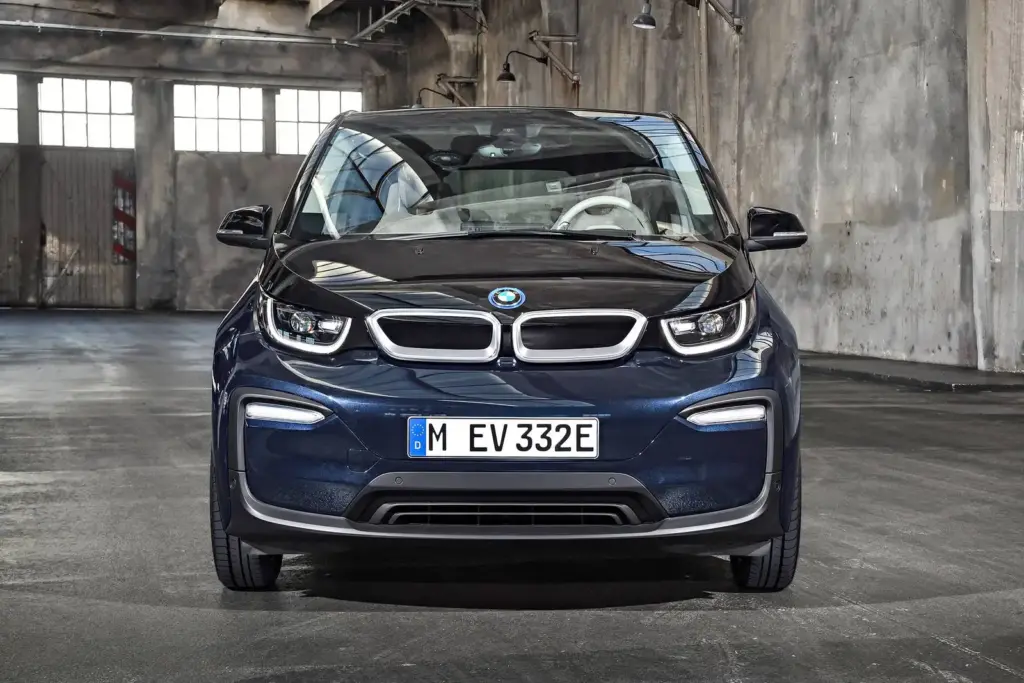
2021 BMW i3 Design & Interior Quality
Exterior Styling Philosophy
The 2021 i3 maintains BMW’s futuristic design language established at launch, featuring distinctive proportions and advanced materials that polarize potential buyers.
Key Design Elements:
- Carbon fiber body construction reducing weight while maintaining structural integrity
- Narrow tire configuration (155/70R19 front, 175/60R20 rear) optimizing aerodynamics
- Coach door design with rear-hinged doors creating unique entry experience
- Floating roof appearance with blackened C-pillars enhancing visual lightness
Aerodynamic Efficiency:
The i3 achieves a 0.29 coefficient of drag through careful body sculpting, active grille shutters, and streamlined underbody panels contributing to range optimization.
Color Options for 2021:
| Color Category | Available Options | Premium Cost |
|---|---|---|
| Standard Colors | Alpine White Non-metallic | No charge |
| Metallic Colors | Mineral Grey, Storm Bay | $550 |
| BMW i Colors | Capparis White, Fluid Black | $550 |
| Special Colors | Protonic Blue (i3s only) | $550 |
Interior Space & Materials
The i3’s interior showcases BMW’s commitment to sustainable luxury through innovative material choices and spacious design despite compact exterior dimensions.
Sustainable Material Innovation:
- Recycled plastics comprising dashboard and door panel construction
- Renewable kenaf fibers replacing traditional plastic in interior trim
- Open-pore eucalyptus wood from certified sustainable forestry sources
- Optional wool blend fabrics offering luxury without environmental compromise
Space Utilization Analysis:
| Interior Dimension | Measurement | Competitive Advantage |
|---|---|---|
| Front Headroom | 40.9 inches | Excellent due to tall roofline |
| Rear Headroom | 37.7 inches | Good for compact vehicle |
| Front Legroom | 41.8 inches | Competitive with luxury sedans |
| Rear Legroom | 35.1 inches | Adequate for adult passengers |
| Cargo Volume | 15.1 cubic feet | Limited but sufficient for urban use |
Dashboard Layout:
The minimalist design features a floating center display, premium materials, and intuitive control placement prioritizing sustainability over ostentatious luxury.
“Suicide Door” Design Analysis
The i3’s innovative rear-hinged door system eliminates the traditional B-pillar, creating distinctive entry characteristics with practical implications for daily use.
Design Advantages:
- Wide door opening facilitating easier entry for adult passengers
- No B-pillar obstruction improving visibility and structural appearance
- Unique aesthetic appeal distinguishing i3 from conventional vehicles
- Enhanced structural rigidity through integrated door frame design
Practical Limitations:
- Front doors must open first before accessing rear compartment
- Child seat installation becomes more challenging without B-pillar anchor points
- Parking lot constraints requiring additional space for door operation
- Weather exposure during passenger loading in adverse conditions
The door design particularly impacts families with children, making conventional alternatives more practical for those prioritizing ease of access.
For buyers seeking unique BMW styling with more conventional doors, the 2024 BMW 2-Series Gran Coupe offers four-door practicality without unusual entry systems.
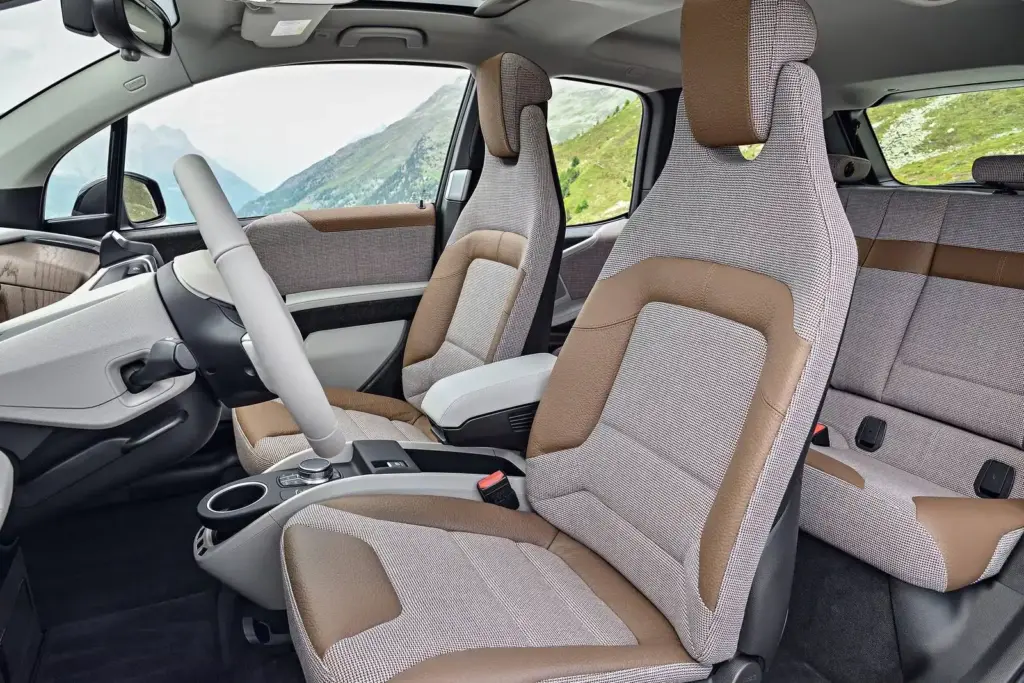
Technology & Charging Infrastructure
Infotainment System & Connectivity
The 2021 i3 features BMW’s iDrive 7.0 system with a 10.3-inch touchscreen display, providing comprehensive connectivity and entertainment features.
Standard Technology Features:
| Technology Element | 2021 BMW i3 | Tesla Model 3 |
|---|---|---|
| Display Size | 10.3-inch touchscreen | 15-inch touchscreen |
| Apple CarPlay | Standard (wired) | Not available |
| Android Auto | Not available | Not available |
| Navigation | Standard with real-time traffic | Standard with integrated routing |
| Voice Control | BMW Intelligent Personal Assistant | Voice commands |
| Over-air Updates | Limited functionality | Comprehensive updates |
User Interface Assessment:
The iDrive system provides familiar BMW operation with rotary controller and direct touchscreen input, though lacking the seamless integration of Tesla’s unified interface approach.
Connected Services:
BMW ConnectedDrive offers remote vehicle monitoring, charging status updates, and climate pre-conditioning through smartphone integration, though with limited long-term software evolution compared to Tesla’s continuous updates.
Charging Speed & Infrastructure Compatibility
The 2021 i3’s charging capabilities reflect 2013 technology standards rather than modern EV requirements, creating significant limitations for long-distance travel.
Charging Speed Specifications:
| Charging Type | BMW i3 2021 | Tesla Model 3 | Chevrolet Bolt EV |
|---|---|---|---|
| DC Fast Charging | 50kW maximum | 170kW+ capable | 55kW maximum |
| 10-80% Charge Time | 42 minutes | 25 minutes | 45 minutes |
| AC Level 2 | 7.4kW onboard | 11.5kW capable | 7.2kW standard |
| Home Charging | 4-5 hours (240V) | 6-8 hours | 7-8 hours |
| Connector Type | CCS Combo | CCS/Tesla | CCS Combo |
Infrastructure Compatibility:
The i3 uses standard CCS charging connectors compatible with Electrify America, EVgo, and ChargePoint networks, but cannot access Tesla’s Supercharger network without adapters[5].
Real-World Charging Experience:
Limited 50kW charging speeds necessitate longer stops during road trips, while home charging adequately serves daily urban commuting requirements.
Advanced Driver Assistance Features
BMW equipped the 2021 i3 with comprehensive active safety systems, though lacking the autonomous driving ambitions of Tesla’s Autopilot system.
Standard Safety Technology:
- Forward collision warning with automatic emergency braking
- Blind spot monitoring with rear cross-traffic alert
- Lane departure warning without steering intervention
- Parking distance control with rear camera system
- Rain sensing wipers and automatic headlight activation
Optional Technology Packages:
The $2,350 Technology and Driving Assistant package adds adaptive cruise control, lane keeping assistance, and enhanced parking features, though without full semi-autonomous capability.
Comparison with Competitors:
Tesla Model 3 includes more advanced driver assistance features as standard equipment, while the i3 requires option packages to achieve similar functionality levels.
Understanding the importance of Best EV chargers becomes crucial for i3 owners planning home charging installations to maximize convenience and charging speed.
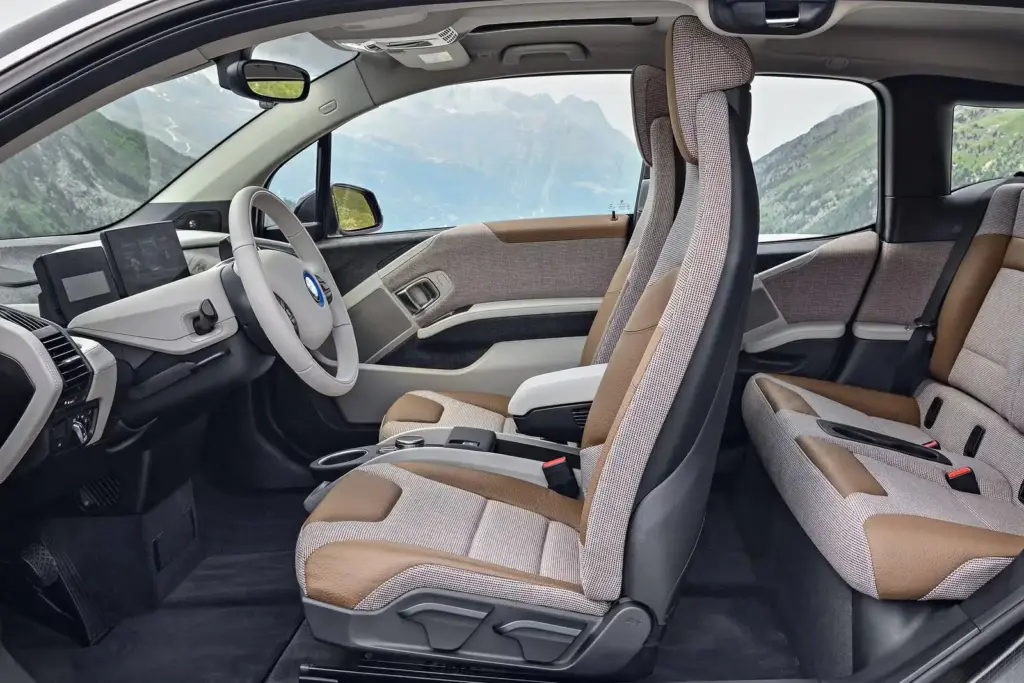
Reliability & Common Problems
Known Issues & Problem Areas
The 2021 i3 benefits from years of refinement but still experiences several recurring issues that potential buyers should understand before purchase[6].
Common Problem Categories:
| Issue Type | Frequency | Typical Repair Cost | Solution Timeline |
|---|---|---|---|
| Charging port failures | Moderate | $800-1,500 | 1-2 weeks |
| High-voltage component issues | Low | $2,000-5,000 | 2-4 weeks |
| Range extender problems | Moderate (REx only) | $1,200-2,800 | 1-3 weeks |
| Door mechanism failures | Low | $1,000-2,000 | 1-2 weeks |
| Tire wear irregularities | High | $800-1,200 | Same day |
Range Extender Specific Issues:
REx models experience periodic warning lights, fuel system problems, and maintenance complexities that pure electric versions avoid entirely.
Electrical System Challenges:
High-voltage component failures, while infrequent, require specialized technicians and expensive replacement parts, potentially creating extended repair timelines.
Maintenance Requirements & Costs
Electric vehicles generally require less maintenance than conventional cars, though the i3 includes some unique service requirements due to its specialized construction.
Routine Maintenance Schedule:
- Brake fluid replacement every 2 years regardless of mileage
- Cabin air filter replacement annually
- Tire rotation every 5,000-7,500 miles due to unique tire sizes
- Battery cooling system inspection every 3 years
- Range extender service (REx only) following conventional engine intervals
Annual Maintenance Cost Estimates:
| Maintenance Category | Annual Cost Range | BMW Dealer | Independent Shop |
|---|---|---|---|
| Basic Service | $400-600 | Higher end | Lower end |
| Tire Replacement | $800-1,200 | Premium pricing | Competitive pricing |
| Brake Service | $200-400 | Standard rates | Reduced cost |
| REx Engine Service | $300-500 | Required capability | Limited availability |
Parts Availability Concerns:
Specialized components like unique tire sizes and carbon fiber body panels may require longer lead times and higher costs compared to conventional vehicles.
Long-Term Ownership Outlook
The i3 demonstrates above-average reliability for electric vehicles, with Consumer Reports rating it at 94.5% reliability among electric car classifications[6].
Battery Longevity Assessment:
BMW provides 8-year/100,000-mile battery warranty coverage, with real-world examples showing minimal degradation after 5+ years of ownership under normal usage patterns.
Component Durability Analysis:
Carbon fiber body construction resists corrosion and impact damage better than conventional steel bodies, while electric drivetrain simplicity reduces mechanical failure points significantly.
Warranty Coverage:
- Basic warranty: 4 years/50,000 miles
- Powertrain warranty: 4 years/50,000 miles
- Battery warranty: 8 years/100,000 miles
- Certified pre-owned: Additional coverage available
Autvex experts recommend budgeting approximately $1,200-1,800 annually for maintenance and repairs, significantly less than conventional luxury vehicles but higher than mass-market EVs due to specialized components.
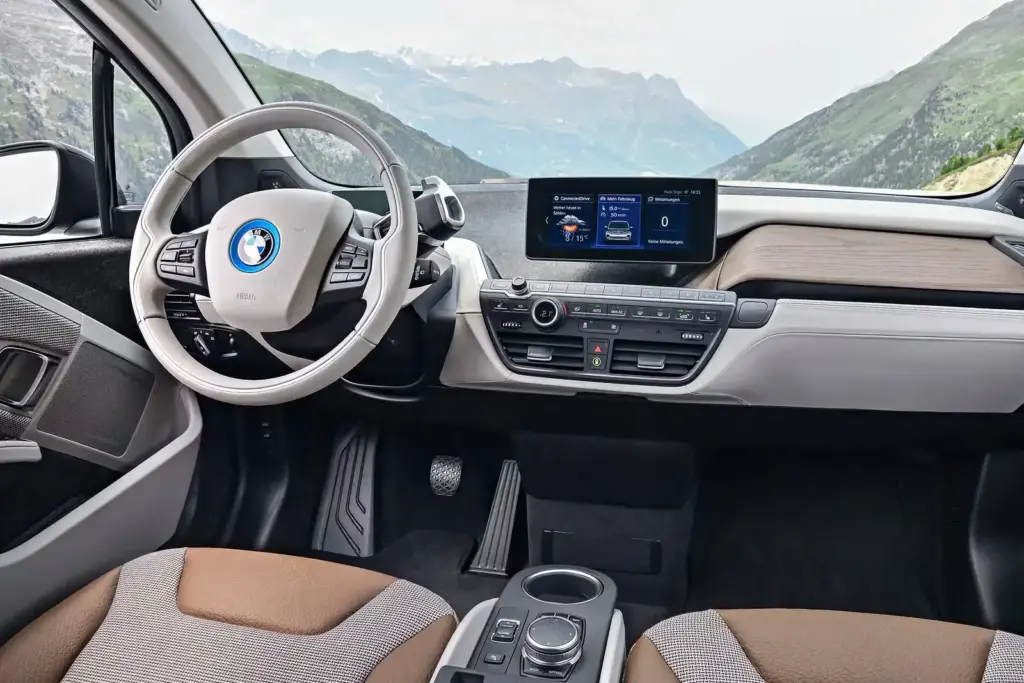
Pricing Analysis & Value Proposition
2021 Model Year Pricing Structure
The 2021 i3 launched with competitive pricing for premium electric vehicles, though current used market values reflect significant depreciation patterns.
Original MSRP Structure:
| Trim Level | Original MSRP | Key Features | Target Market |
|---|---|---|---|
| i3 BEV | $44,450 | 153-mile range, standard features | Urban commuters |
| i3 REx | $48,300 | Range extender, extended capability | Range-anxious buyers |
| i3s BEV | $47,650 | Sport suspension, unique styling | Performance-oriented |
| i3s REx | $51,500 | Combined performance and range | Premium buyers |
Current Used Market Values:
According to Kelley Blue Book data, 2021 i3 models now range from $11,800 trade-in value to $25,300 private party pricing depending on condition and mileage[2].
Depreciation Analysis:
The i3 has lost approximately 56% of its original value over three years, placing it in the 75-100th percentile for depreciation among 2021 hatchbacks, though this creates opportunities for budget-conscious buyers.
Cost of Ownership Analysis
Electric vehicle ownership provides operational cost advantages offset by higher insurance premiums and specialized maintenance requirements.
Annual Ownership Cost Breakdown:
| Cost Category | BMW i3 | Tesla Model 3 | ICE Luxury Compact |
|---|---|---|---|
| Fuel/Electricity | $500-800 | $600-900 | $2,000-2,800 |
| Insurance | $1,800-2,400 | $1,600-2,200 | $1,400-1,900 |
| Maintenance | $800-1,200 | $400-600 | $1,500-2,200 |
| Registration | $300-500 | $400-600 | $200-400 |
| Total Annual | $3,400-4,900 | $3,000-4,300 | $5,100-7,300 |
Insurance Considerations:
The i3’s carbon fiber construction increases repair costs, resulting in higher insurance premiums compared to conventional vehicles, though specialized insurers offer competitive rates for experienced EV owners.
Energy Cost Benefits:
Electricity costs approximately 3-4 cents per mile compared to 12-15 cents for gasoline, providing substantial savings for high-mileage drivers despite higher upfront costs.
Financing & Incentive Considerations
Used EV purchases may qualify for various incentives while avoiding the complexity of new vehicle tax credit requirements.
Available Incentive Programs:
- Federal tax credits not applicable for used vehicle purchases
- State rebates varying by location, with California offering up to $2,500 for used EVs
- Utility incentives providing charging equipment rebates and reduced electricity rates
- Local HOV lane access in many metropolitan areas regardless of purchase date
Financing Options:
Credit unions and banks increasingly offer competitive rates for used EV financing, recognizing lower maintenance costs and higher reliability compared to conventional vehicles.
Purchase Timing Strategies:
Current depreciation creates attractive buying opportunities, while potential future collectible status of the final i3 model year may support value retention for well-maintained examples.
Those considering financing options should understand what happens when your car is totaled but still drivable since unique i3 construction affects insurance claims processing.
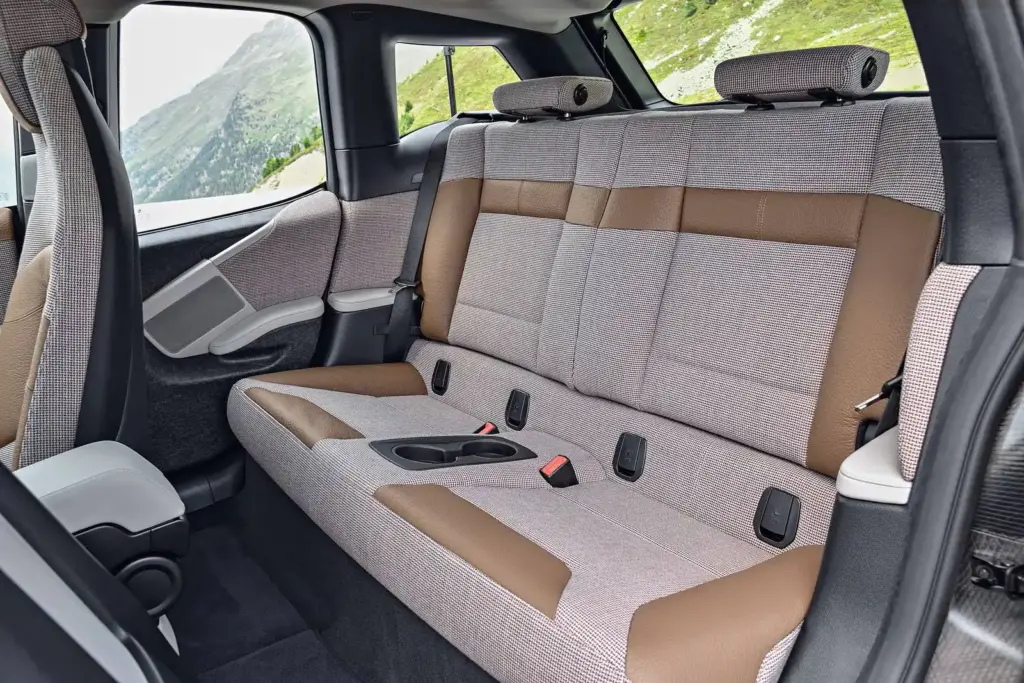
Competitive Comparison & Alternatives
vs Tesla Model 3 (2021)
The Tesla Model 3 represents the i3’s primary competitor in the premium electric sedan market, though serving different buyer priorities and usage patterns[3].
Direct Specification Comparison:
| Feature Category | 2021 BMW i3 | 2021 Tesla Model 3 | Winner |
|---|---|---|---|
| Range (EPA) | 153 miles | 267-358 miles | Tesla |
| Charging Speed | 50kW max | 170kW+ capable | Tesla |
| 0-60 mph | 6.6 seconds | 5.3-3.1 seconds | Tesla |
| Interior Materials | Sustainable luxury | Minimalist synthetic | BMW |
| Service Network | 350+ BMW dealers | Limited Tesla service | BMW |
| Software Updates | Limited functionality | Comprehensive OTA | Tesla |
| Used Price Range | $11,800-25,300 | $25,000-45,000 | BMW |
Technology Integration:
Tesla’s integrated approach provides seamless smartphone-like operation, while BMW maintains traditional luxury car interfaces with physical controls and conventional instrument clusters.
Market Positioning:
The i3 appeals to luxury buyers prioritizing traditional premium materials and sustainable construction, while Model 3 attracts technology-focused consumers seeking maximum range and performance.
vs Chevrolet Bolt EV & Hyundai Kona Electric
Mass-market electric alternatives provide superior range and value propositions compared to the premium-positioned i3, though sacrificing luxury appointments and unique construction.
Value Proposition Analysis:
| Vehicle | 2021 MSRP | Used Range | EPA Range | Value Rating |
|---|---|---|---|---|
| BMW i3 | $44,450-51,500 | $11,800-25,300 | 153 miles | Premium/Limited |
| Chevrolet Bolt EV | $31,995 | $15,000-28,000 | 259 miles | Excellent/Mainstream |
| Hyundai Kona Electric | $37,390 | $18,000-32,000 | 258 miles | Good/Practical |
Interior Quality Comparison:
The i3 provides superior materials and unique design elements, while mass-market alternatives offer conventional layouts with adequate comfort and technology features.
Charging Infrastructure:
All three vehicles support CCS fast charging, though the i3’s limited 50kW capability creates longer charging sessions compared to the Bolt’s 55kW and Kona’s 77kW maximum speeds.
vs BMW i4 & Other BMW EVs
BMW’s EV lineup evolution positions the i3 as an experimental predecessor to more conventional electric sedans like the i4 and iX models.
BMW Electric Portfolio Positioning:
- i3 (discontinued): Experimental urban car with unique construction
- i4: Conventional luxury sedan with 270-mile range and 270hp
- iX: Large SUV flagship with 380-mile range and premium positioning
- Future models: Traditional BMW styling with electric powertrains
Technology Migration:
Advanced features from i3 development influenced BMW’s current electric vehicles, including sustainable materials, efficient thermal management, and one-pedal driving capabilities.
Purchase Timing Considerations:
Buyers choosing between used i3 and new i4 must weigh unique styling and lower costs against modern range, charging speed, and conventional practicality offered by newer BMW EVs.
Understanding BMW’s broader lineup helps buyers evaluate whether the 2023 BMW 2-Series or other conventional models might better serve practical needs while maintaining BMW heritage.
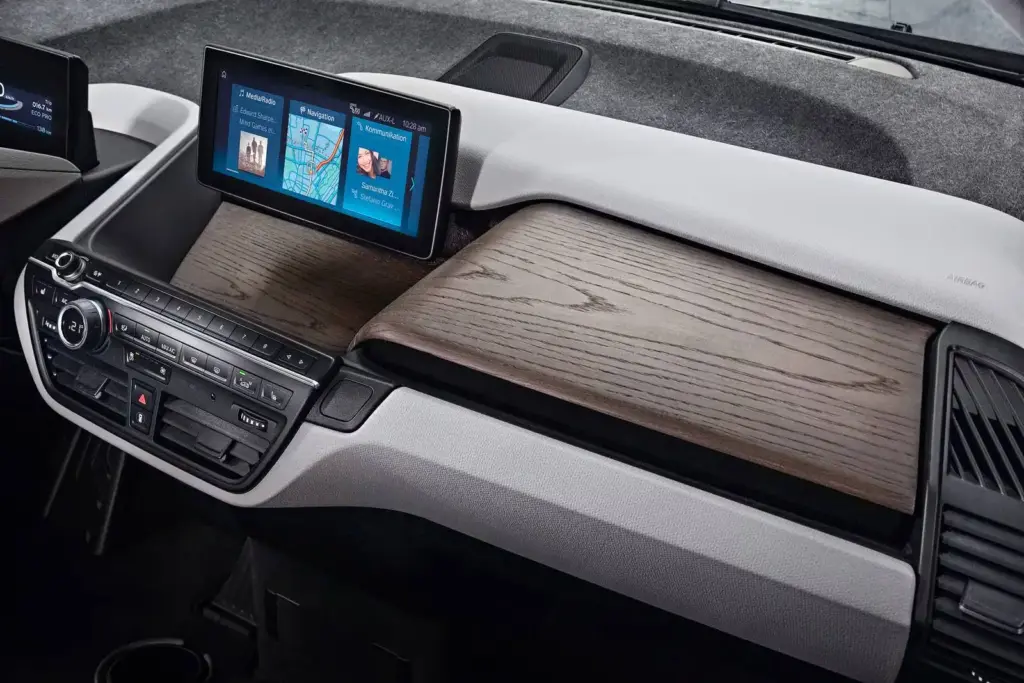
Buying Guide & Recommendations
Best Use Cases for 2021 i3 Purchase
The 2021 i3 serves specific buyer segments exceptionally well while proving unsuitable for mainstream transportation needs, requiring careful self-assessment before purchase.
Ideal Ownership Scenarios:
- Urban commuting within 75-mile daily round trips with reliable home charging
- Secondary vehicle complementing longer-range primary transportation for families
- Environmental priorities emphasizing sustainable materials and carbon-neutral construction
- Unique design appreciation valuing distinctive styling over conventional practicality
Geographic Considerations:
| Location Type | Suitability | Key Factors |
|---|---|---|
| Dense Urban Areas | Excellent | Short distances, charging infrastructure |
| Suburban Communities | Good | Moderate distances, home charging availability |
| Rural Areas | Poor | Limited charging, longer daily distances |
| Cold Climates | Moderate | Reduced winter range, heating energy needs |
Lifestyle Compatibility:
The i3 works best for environmentally conscious professionals with predictable daily routines, covered parking for weather protection, and alternative transportation for longer trips.
Red Flags & Deal Breakers
Potential buyers should identify specific warning signs during vehicle inspection and purchase negotiations to avoid problematic examples.
Critical Inspection Points:
- High mileage examples above 60,000 miles showing excessive battery or component wear
- Range extender problems including warning lights, rough operation, or maintenance deferrals
- Accident history affecting carbon fiber body integrity or door mechanism operation
- Missing service records particularly for brake fluid, battery cooling, and software updates
- Charging port damage from improper connector use or environmental exposure
Documentation Requirements:
Verify complete maintenance history, recall completion, software updates, and any warranty repairs before finalizing purchase decisions.
Financing Cautions:
Ensure lenders understand EV valuation and avoid loans with prepayment penalties that limit flexibility as the used EV market evolves rapidly.
Inspection Checklist & Negotiation Tips
Successful i3 purchases require specialized knowledge about electric vehicle evaluation and market pricing dynamics.
Pre-Purchase Inspection Protocol:
| System | Inspection Items | Professional Testing |
|---|---|---|
| Battery Health | Range testing, charging speed verification | BMW diagnostic scan |
| Door Mechanisms | Operation smoothness, alignment, seal integrity | Manual testing |
| Charging System | Port condition, cable functionality, software updates | Live charging test |
| Tire Condition | Unusual wear patterns, remaining tread depth | Professional assessment |
| Body Integrity | Carbon fiber damage, panel gaps, paint condition | Visual and tactile inspection |
Market Pricing Research:
Use Kelley Blue Book, Edmunds, and local market data to establish fair pricing ranges, then negotiate based on vehicle condition, maintenance history, and local market supply.
Negotiation Strategies:
Emphasize any needed repairs, missing maintenance records, or market depreciation trends to justify lower offers, while recognizing unique vehicle characteristics that support value retention.
Autvex analysis suggests focusing on low-mileage examples with complete service histories from original owners who understood the vehicle’s specialized requirements and maintenance needs.
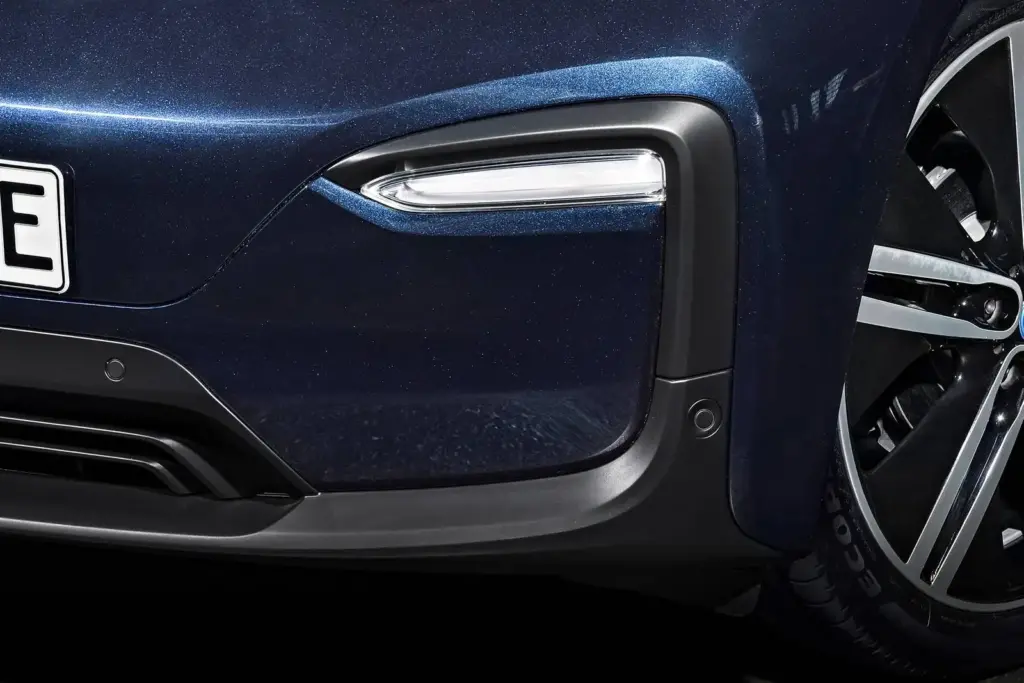
Key Takeaways
- Limited range reality – 153 miles EPA rating suits urban commuting but restricts long-distance travel
- Significant depreciation creates value – 56% loss enables affordable luxury EV ownership
- Unique door design impractical for families with children requiring frequent rear seat access
- Charging speed outdated at 50kW maximum versus modern EVs exceeding 150kW capabilities
- Sustainable materials genuine – recycled plastics and renewable fibers support environmental goals
- Reliability above average at 94.5% electric vehicle class rating with 8-year battery warranty
- Urban use ideal scenario – tight turning radius and instant torque excel in city driving
FAQs
Is the 2021 BMW i3 reliable for daily use?
Yes, with a 94.5% reliability rating in electric vehicle surveys, the 2021 i3 provides dependable daily transportation for urban commuting within its 153-mile range limitation, though specialized service requirements increase complexity[6].
How does the 2021 i3 compare to Tesla Model 3 in real-world use?
The Tesla Model 3 offers superior 267+ mile range, 170kW+ charging speed, and advanced technology, while the i3 provides premium interior materials, sustainable construction, and traditional luxury appointments at significantly lower used prices[3].
What are the most common problems with 2021 i3 models?
Common issues include charging port failures ($800-1,500), range extender warning lights in REx models ($1,200-2,800), irregular tire wear due to unique sizes ($800-1,200), and occasional high-voltage component problems requiring specialized service[6].
Is the limited 153-mile range adequate for most drivers?
The 153-mile range suits urban commuters with predictable daily routes under 75 miles round-trip, but restricts highway travel and requires careful trip planning compared to modern EVs offering 250+ mile capability[1].
Are the “suicide doors” safe and practical for families?
The rear-hinged doors provide wide openings for adult access but create challenges for child passengers, requiring front doors to open first and complicating car seat installation without traditional B-pillar anchor points[4].
How much does it cost to maintain a 2021 BMW i3?
Annual maintenance costs range from $800-1,200 for basic service, tire replacement, and brake fluid changes, plus $300-500 additional for range extender engine service, totaling less than conventional luxury vehicles[6].
Should I buy the range extender or pure electric version?
Choose pure electric for simplicity and lower maintenance costs if daily driving stays within 100-120 miles. Select range extender only if occasional longer trips exceed 150 miles and charging infrastructure remains limited[4].
What’s the best price range for a used 2021 i3?
Current market values range from $11,800-25,300 depending on mileage and condition, with excellent examples under 30,000 miles commanding $20,000-25,000, while higher-mileage vehicles offer entry-level pricing around $12,000-16,000[2].
References
- Car and Driver. (2024). 2021 BMW i3 Review, Pricing, and Specs. https://www.caranddriver.com/bmw/i3-2021
- Kelley Blue Book. (2024). 2021 BMW i3 Depreciation Value. https://www.kbb.com/bmw/i3/2021/depreciation/
- Green Cars Compare. (2018). BMW i3 BEV 60 Ah vs Tesla Model 3 Standard Range Plus. https://greencarscompare.com/global/cars/compare/?comparing-cars=bmw-i3-bev-60-ah-vs-tesla-model-3-standard-range-plus
- Cars.com. (2025). 2021 BMW i3 – Specs, Prices, Range, Reviews & Photos. https://www.cars.com/research/bmw-i3-2021/
- EVSE Australia. (2021). What You Need to Know About the New & Updated 2021 BMW i3. https://evse.com.au/blog/what-you-need-to-know-about-the-new-updated-2021-bmw-i3/
- What Car. (2024). Used BMW i3 – 2013-2022 Reliability & Common Problems. https://www.whatcar.com/bmw/i3/hatchback/used-review/n874/reliability
- Edmunds. (2025). 2021 BMW i3 Value – Find Out What Your Car’s Worth. https://www.edmunds.com/bmw/i3/2021/appraisal-value/
- Recurrent Auto. (2024). BMW i3 Real Range & Battery Capacity. https://www.recurrentauto.com/guides/bmw-i3

I am a senior automotive analyst at Autvex. Expert vehicle evaluations, in-depth reviews, and objective analysis helping readers make informed automotive decisions with years of industry experience.


